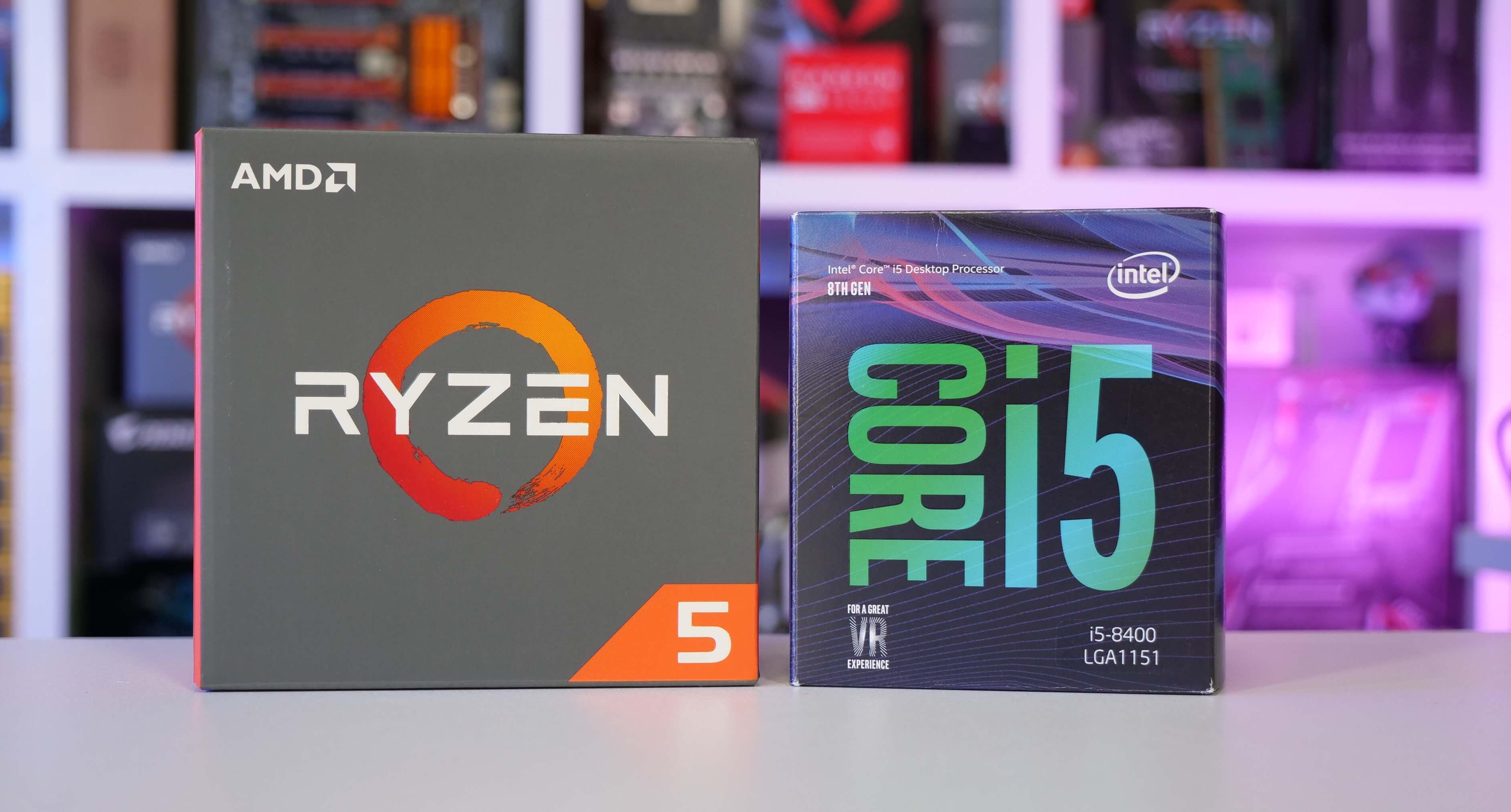The Ryzen 5 1600 was released about a year ago sporting 6 cores and 12 threads it was seriously impressive given its $220 asking price. Then last month AMD officially reduced pricing of their entire Ryzen lineup and this saw the 1600 drop down to ~$190.
The reason is simple: the 2nd generation Ryzen processors will become available very soon and builders are well aware of this. So in an effort to drive sales of 1st-gen parts, the discount campaign began. At this point though we recommend you wait a few weeks before making any CPU purchases and then re-evaluate your options.
So why bother with this comparison at all? Well, for a few reasons. Before the incoming 2nd-gen Ryzen parts arrive this will let us establish how AMD and Intel currently stack up with all the latest Windows updates, BIOS updates, driver updates and new motherboards we have on hand, giving us an up to date reference point for the new CPUs.
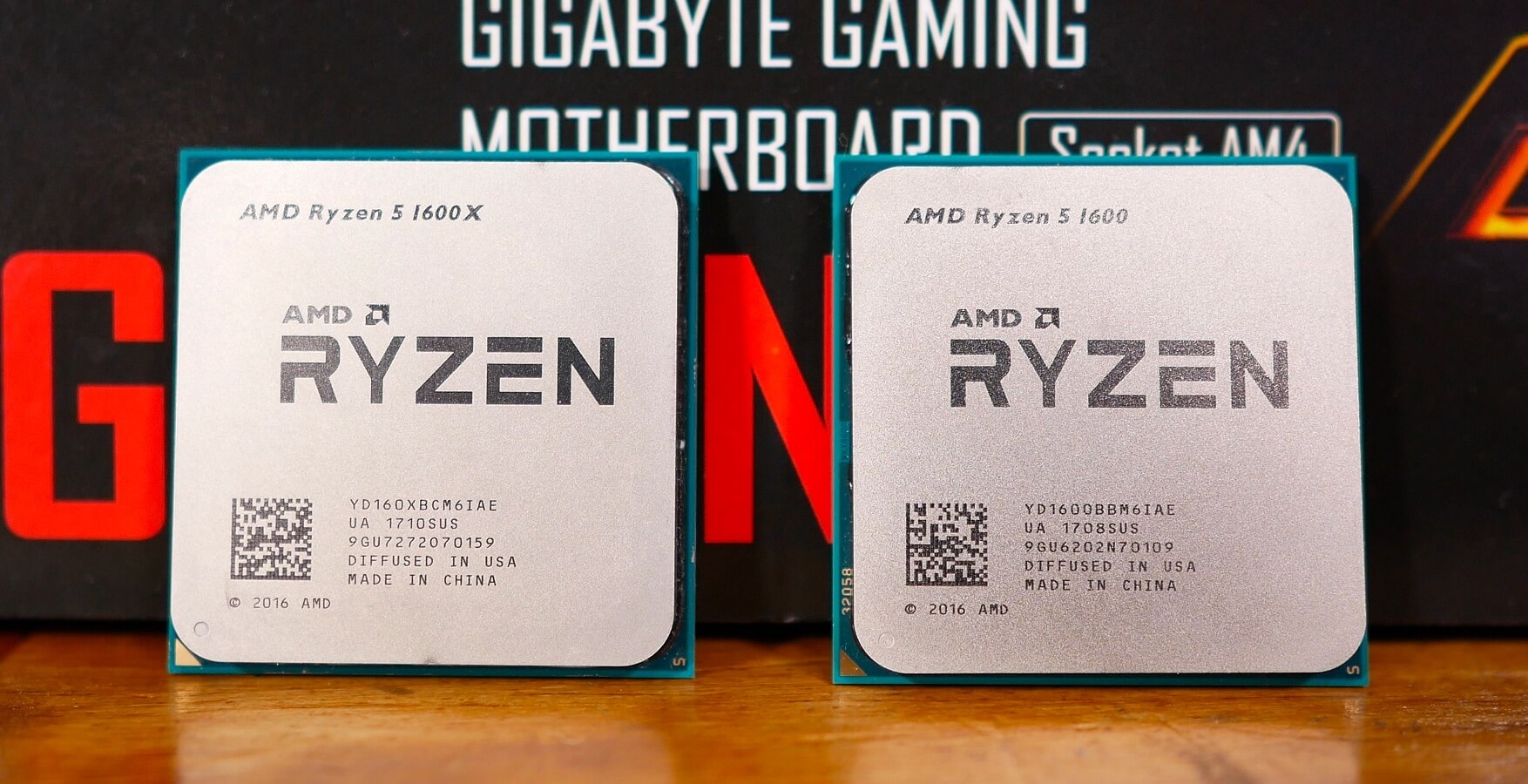
A big part of Ryzen's appeal is the value aspect, you can throw the Ryzen 5 1600 on a relatively inexpensive motherboard, overclock the snot out of it and you're away. Meanwhile, the Core i5-8400 up until about a week ago was stuck on the Z370 platform, a platform that for the most part it can't utilize so the added price of the motherboard hurts its value.
Now we have H310, B360 and H370 motherboards and these help to shave a little off the top. So this changes the value aspect of the more affordable Coffee Lake CPUs and makes them somewhat more appealing to budget shoppers.
Therefore for this test we're going to compare the Ryzen 5 1600 using DDR4-3200 memory on the MSI B350M Mortar in its stock out of the box configuration, as well as a 4 GHz overclock using a basic tower style air-cooler. Then the Core i5-8400 has been tested on two motherboards, one of which is the cheapest B360 motherboards MSI makes, the B360M PRO-VD. On this budget B360 board we are using DDR4-2666 memory and the box cooler. Additionally the Core i5 processor has also been tested on the MSI Z370 PC Pro with DDR4-3200 memory and a basic tower style air-cooler.
That just about covers all the bases. Oh, well that, and no, MCE wasn't enabled for any of the Core i5-8400 tests, mostly because you can't enable this feature on any locked Intel CPUs on any 300-series motherboard.
Benchmarks
Alright so kick starting off the blue bar graph parade is SiSoftware Sandra's memory bandwidth test and here we're looking at sustained read/write performance in gigabyte's per second. The Core i5-8400 on the B360 motherboard is limited to just under 27 GB/s as the maximum memory support which this chipset is DDR4-2666.

However using a Z370 board with DDR4-3200 memory increased throughput by 22% to 32.7 GB/s. Impressive stuff but that still placed it behind the Ryzen 5 1600 which was good for around 39 GB/s with DDR4-3200 memory, both stock and overclocked.
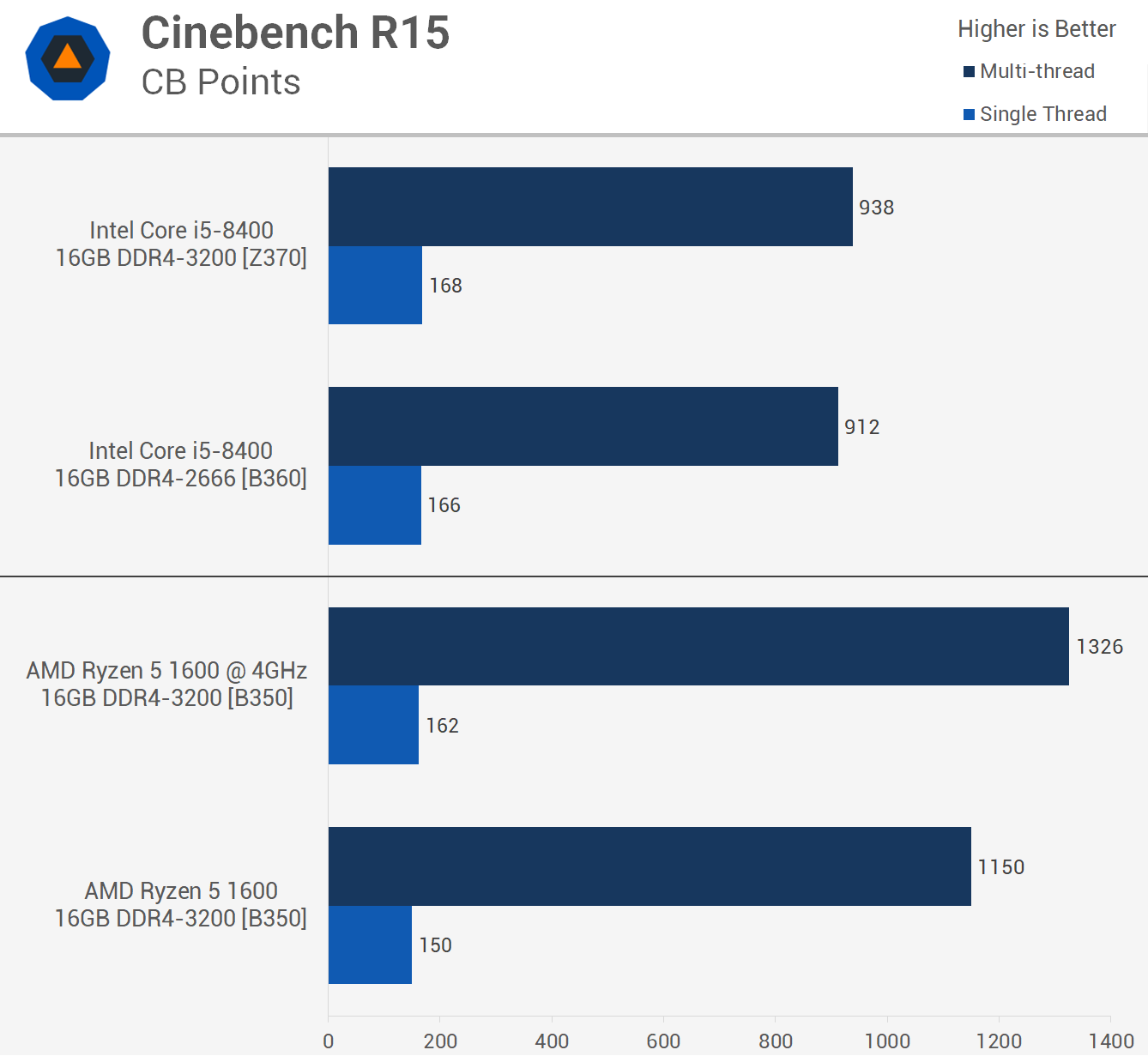
Before we get into the real world applications here's a look at the Cinebench R15 scores and at least please note these are not the absolute best scores, these scores are based on an average of half a dozen back to back runs. As expected what this shows us is that Intel enjoys greater single core performance while Ryzen's many threads thanks to the use of SMT gives it superior multi-threaded performance.
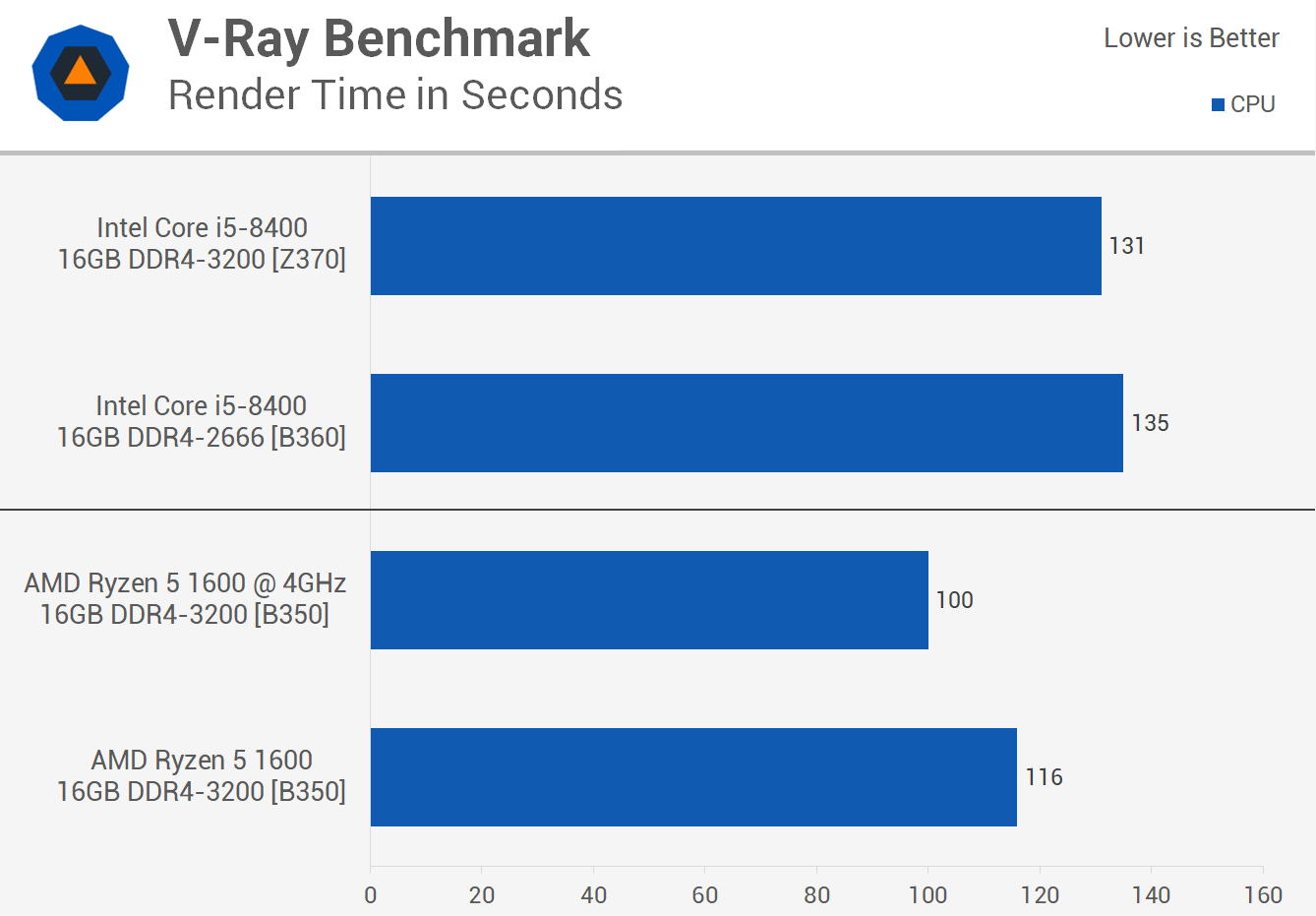
Demonstrating the excellent multi-threaded performance of Ryzen is the V-Ray benchmark. Rather than a score like Cinebench we're looking at render time here, measured in seconds, so lower is better.
Here we see that stock the Ryzen 5 1600 was 16% faster than the 8400 on the B360 board and 13% faster than the Z370 configuration. Overclocking the 1600 improved performance by 16% and now the AMD CPU is at least 31% faster than the Core i5-8400.
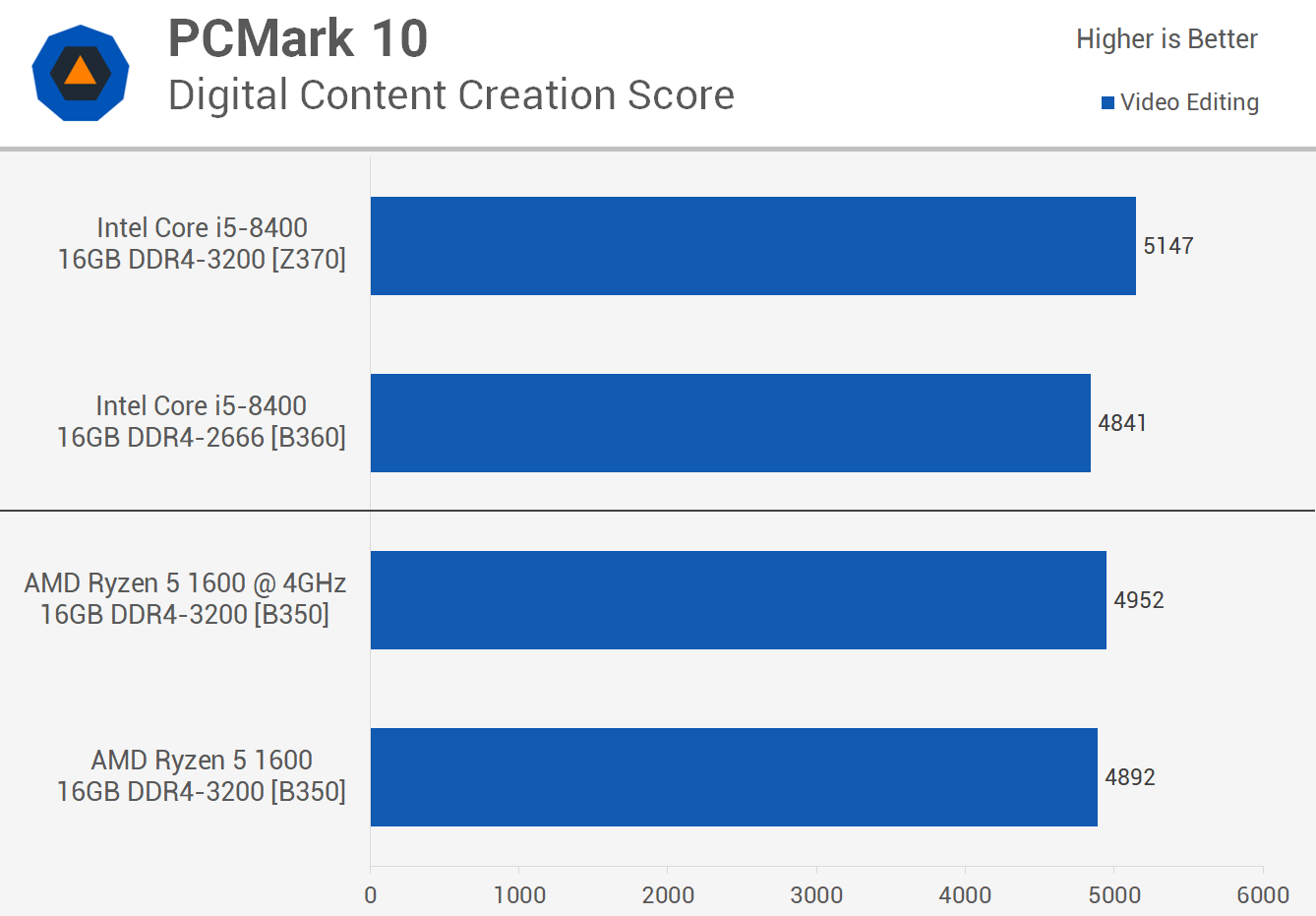
When it comes to video editing the superior IPC of the Core i5 processor and often higher clock speeds achieved when doing these lightly threaded editing tasks gives Intel an advantage. Ryzen isn't exactly 'slow' in comparison but it's not the slam dunk case for AMD that we've seen in the previous tests, more on editing performance when we get to Premiere Pro later in the video.

Moving on to physics performance in games, here we see that if a game was well designed to take advantage of Ryzen's many threads it would allow the R5 1600 to dominate the 8400, even when left stock. Of course this isn't the case in 99% of the games out there, in fact even today Ashes of the Singularity is one of the few examples we have of a well designed game that can take advantage of many threads.

Before we get into games though we have a few more productivity benchmarks to check out and here we see how these CPUs compare in Corona. AMD's Ryzen 5 1600 enjoys a big win in this benchmark, completing the render time 27% quicker than the Core i5-8400. That margin grows to 30% once the 1600 is overclocked and the 8400 is thrown on a Z370 board.

Lower is better for the Blender test as we're again measuring the time it takes to complete the render. Out of the box the Ryzen 5 1600 is superior, beating the 8400 by a 6% margin even when it's using higher speed memory on a Z370 board. Overclocking the Ryzen processor reduced the render time by 13% making it clearly superior in this test.
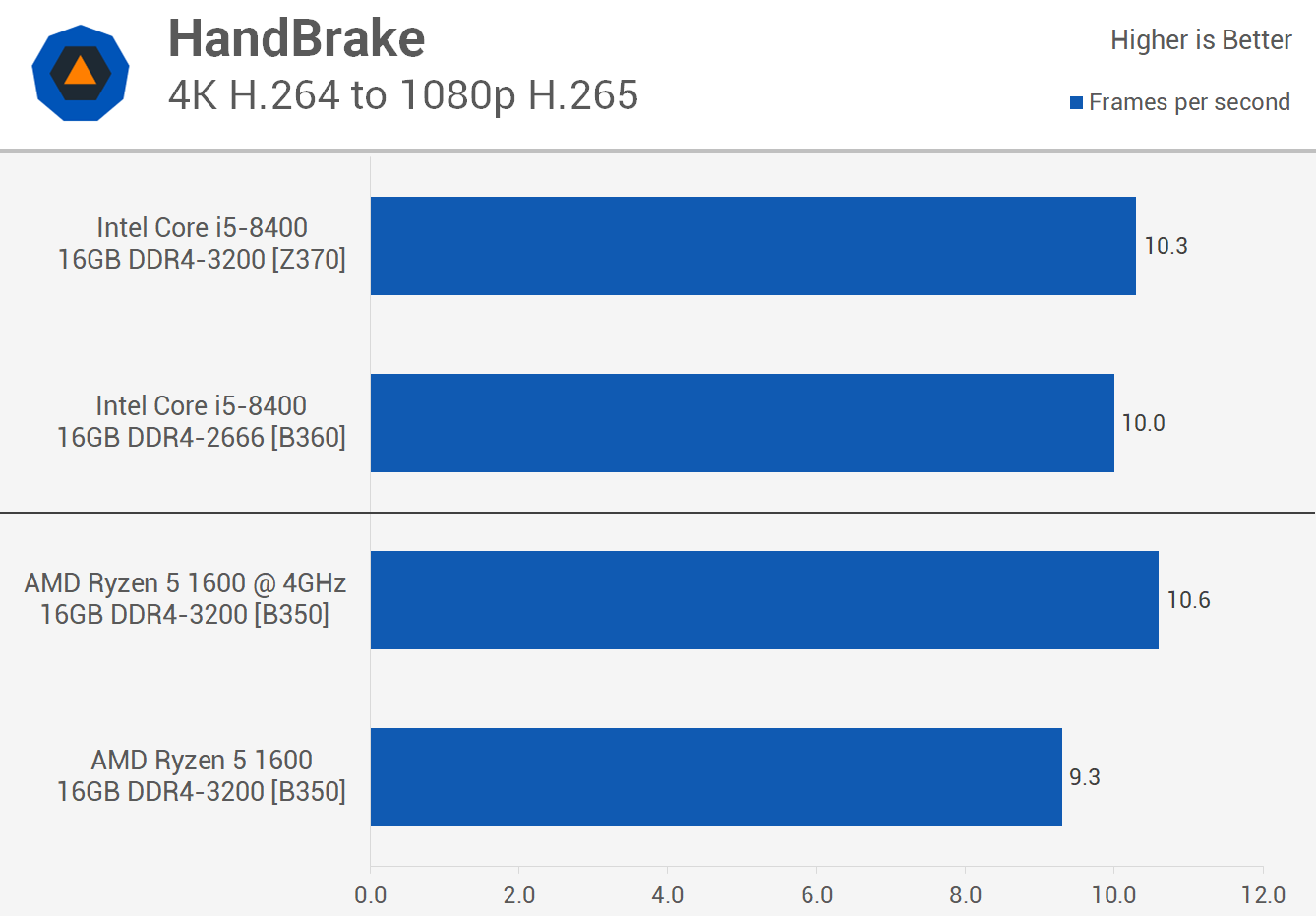
Moving on to HandBrake, here the Core i5-8400 was faster than then the R5 1600, albeit by a small margin. Still we do see an 8% increase in performance when going from 9.3 to 10 fps. However once we overclock the 1600 performance is boosted by 14% and this is enough to just edge out the 8400 when paired with higher frequency memory on a Z370 board.
